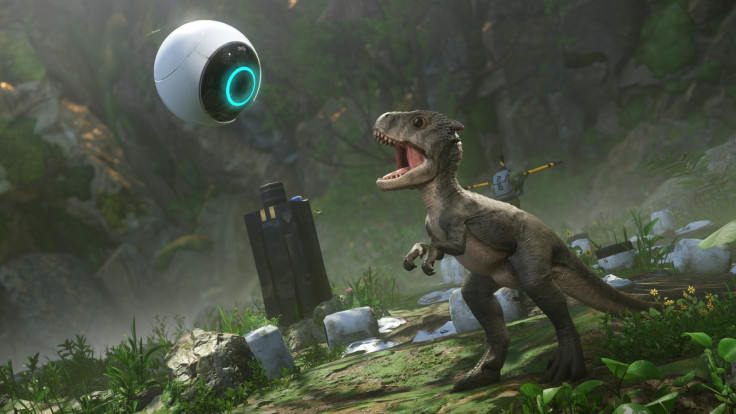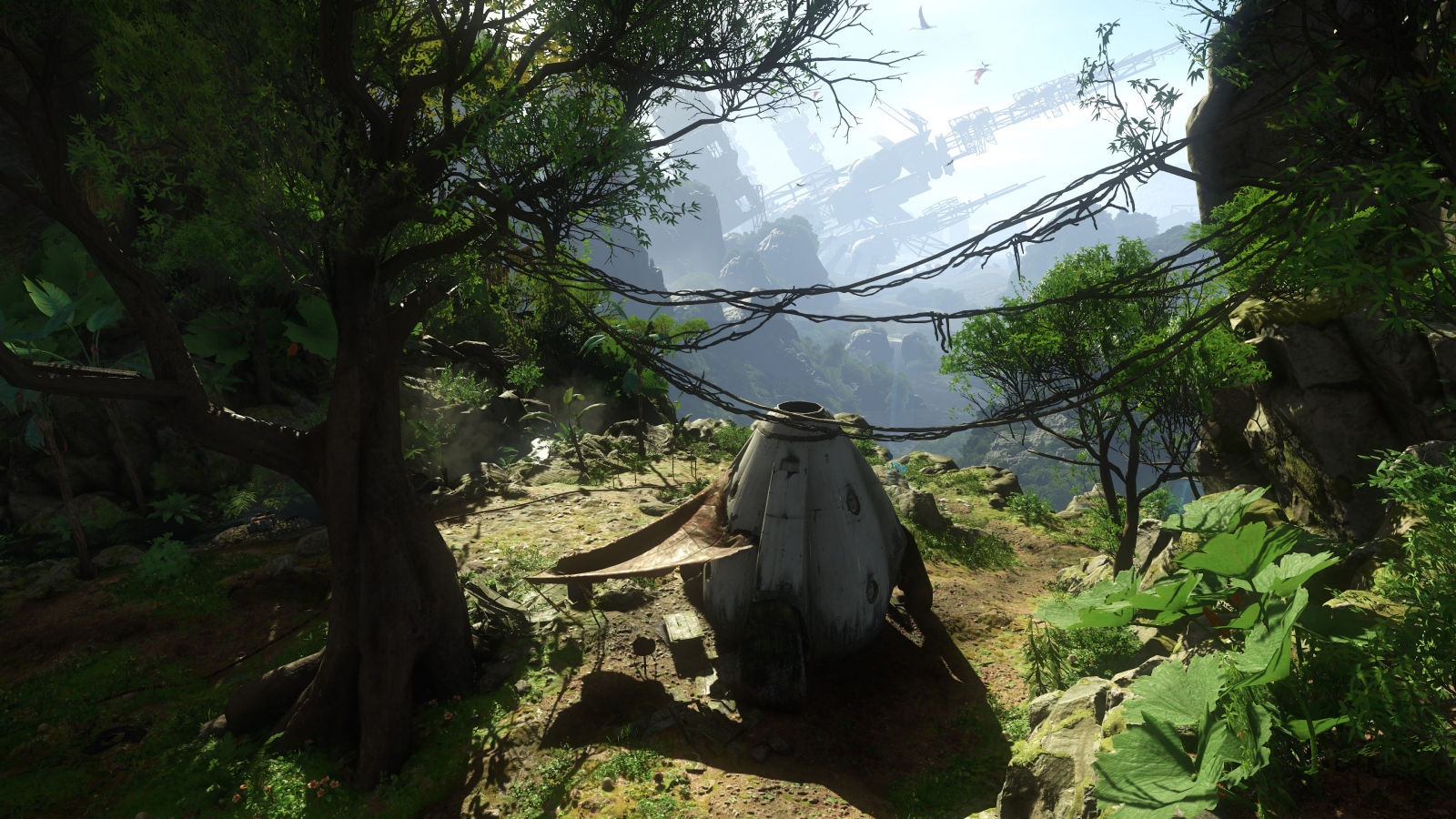Robinson - The Journey preview: A boy, a sarcastic robot and a wide-eyed T-Rex go an adventure
Dinosaurs in virtual reality. Oh, you need to know more?

Watch Robinson: The Journey on a screen and you'd be hard pressed to tell it was a virtual reality game. As long as you weren't able to see the player slowly looking around like a stoned student in an aquarium tunnel, the game would quite happily pass for the latest big budget open world adventure.
Production value is hard to come by in virtual reality (VR) games because, quite simply, they're largely being made on a small scale or with stretched budgets, but Crytek's Robinson looks incredible. With the headset on it doesn't look as good of course, but it's still one of the finer PlayStation VR games I've played to date.
The game's setting – a world inhabited by jungle-dwelling dinosaurs – looks fantastic. This is where protagonist Robin has crashed landed. He's the child of a family that's been travelling across the stars for generations in the hope of finding a new home for humanity. He's desperate to find his family, or any humans, but he's not completely alone either.
Robin is guided along by a sarcastic, British robot pal called Higs, and surprisingly, a baby T-Rex called Laika. That little lass wasn't the only surprising thing about the demo we were shown. A previous demo sold Robinson: The Journey as a linear experience, but here we were shown an open, hub-like area that we had free run of.
Beginning in an escape pod-turned-makeshift home, the player is quickly shown the basics, and then how to interact with the world. Robin is first tasked with turning on the power to the makeshift security perimeter, which is done by transferring the player's viewpoint to Higs. This offers a birds-eye view and allows the player to re-route power to the gates keeping groups of nuisance-saurus out and other, bigger threats.
With the power back on, next we were tasked with finding Laika, who's just a little smaller than the player. The virtual reality really brings her to life in a way that'll be tough to exhibit with the less friendly dinosaurs, on account of the player wanting to get the hell away from them as quickly as possible.
Once we've coaxed Laika out, we play a game of hide and seek, which exposes a concern we had with the game so far. If we were looking at it being played on a screen, the one thing that would give it away as a VR title is the slow movement. To others it appears sluggish, in play the experience of VR off-sets that, but only slightly.
Movement in virtual reality is a complicated aspect every developer needs to get right, if only to ease any feelings of nausea that can still arise from poor or lazy VR development. This certainly isn't the case with Robinson. While I did start to feel a little uneasy at points, this was due to an over-use of the right analogue stick, which shifts the player's perspective by 20-ish degree increments. It's designed to correct when necessary, with the direction the player moves in dictated by where they look, but I used it habitually due to the habits of playing non-VR games.





My point of contention is the clash between the slow movement that's required of VR games and the open nature of this area of the game. When given straight forward objectives, this wasn't a problem, we knew where to go and had that clear destination in mind, even if we wanted to go the long way to soak in the environment. When I was tasked with finding something (in this case Laika) it the slow movement began to grate.
A lengthier session with the game will reveal how extensive a problem this is, but it shouldn't detract from Robinson's many virtues. The setting looks fantastic, and there are a great many more facets to its gameplay than you might expect.
The player is able to grab and manipulate objects, throwing them also if need be, and scanning the world's wildlife is also a big part of the game too, if you want it to be. Like most games with a similar mechanic, you're rewarded with information about the creature. Virtual reality brings this to life though, with each entry also including the animal's in-game model, which you can inspect with greater detail than you might outside the headset. Our first demo of the game also included a climbing mechanic based on Crytek's other VR title, The Climb.
There's plenty of gameplay tools here for the developers to make use of in the final product, which has the potential to be a real highlight of this year's virtual reality offering. Or indeed next year's, if it's to be released on HTC Vive and Oculus Rift in the future.
For all the latest video game news follow us on Twitter @IBTGamesUK.
© Copyright IBTimes 2024. All rights reserved.






